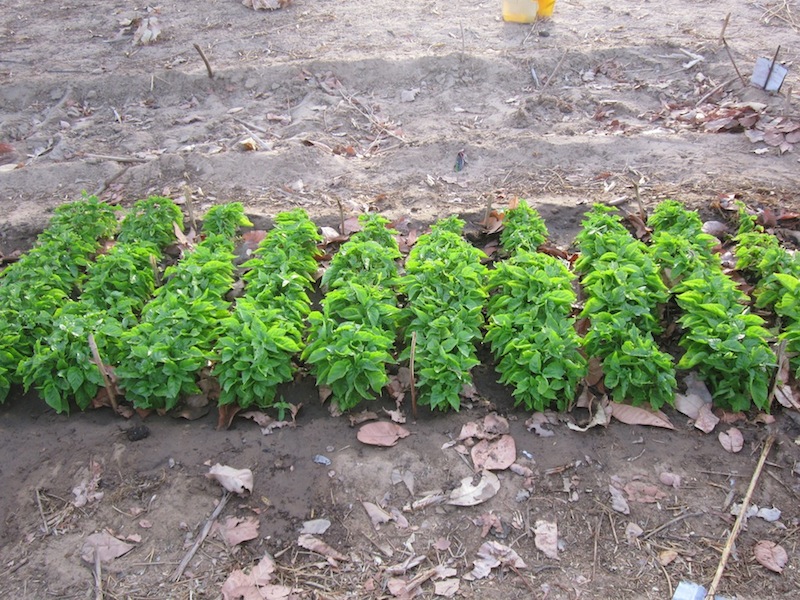In Senegal, “attaya bi neexna de” (tea is good). In the afternoon, after the midday meal, friends gather to chat and make attaya, a type of gunpowder green tea. Making attaya can take hours and is an important part of Senegalese cuisine and culture.
To make attaya, one places green tea leaves (warga) in a teapot with water. The tea is typically boiled over a charcoal stove, or fuurno. Sugar is then added to the tea and the tea is poured from a height into small, clear glasses until foam appears in the glass. Friends then share this first glass of tea, called lewel. After adding additional sugar and mint, or nana, to the teapot, the process begins again for a second (naarel) and third (nettel) round of tea. Each round of tea is sweeter than the last.
There are three types of mint used in attaya – nana ordinaire, nana fass, and nana menthe. Senegalese prefer to use nana fass in their attaya but have often had trouble locating an adequate supply. Garden cooperatives in each of CREATE!’s partner communities decided to take advantage of the local nana shortage. The cooperatives now grow nana and sell it in local markets, thus providing fresh mint while acquiring another source of income.
For women in CREATE!’s agricultural cooperatives, attaya is not just tea, it’s a business opportunity!


